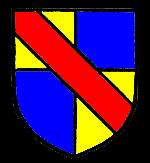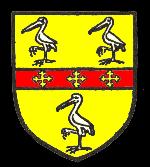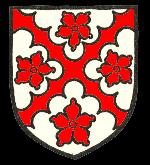Greathampstead Someries Manor Luton

Somery coat of arms
Greathampstead Someries Manor was a sub-manor, held of the Manor of Woodcroft. And first appear in 1309 as property of Agnes, wife of Roger de Somery of Dudley Castle, who died in that year and was succeeded by her son John who was, in turn, succeeded by two sisters in 1321 - Joan de Botetourt and Margaret, wife of John de Sutton of Dudley. Margaret inherited Greathampstead Someries and in 1380 trustees conveyed it to her great-grandson, Sir John de Sutton, when he came of age.

Wenlock coat of arms
Nothing further has been found about the manor until 1464 when the manor, for the first time recorded by the name of Greathampstead Someries, was transferred by John Aylesbury to Lord John Wenlock, who changed sides twice during the Wars of the Roses and was killed for his second treachery during the Battle of Tewkesbury in 1471. His estates were forfeited to the Crown and were given to Thomas Rotherham, then Bishop of Lincoln and later Archbishop of York. The archbishop died in 1500 and his Luton estates passed to his brother John, who died in 1504 and was succeeded by his young son Thomas who died in 1565. His Luton property went to his son George and, on his death in 1600, to his son Sir John Rotherham.

Crawley coat of arms
In 1629 Sir John sold Greathampstead Someries to his son-in-law, Sir Francis Crawley. The Crawley family owned the manor for nearly a century, selling in 1724 to Sir John Napier and it became absorbed into Luton Manor. When Luton Manor was sold in 1763 Someries was called a capital messuage (usually meaning a manor or mansion house) or farm and Someries Farm survived into the 20th century, although the manor was never mentioned again.
 Napier coat of arms
Napier coat of arms